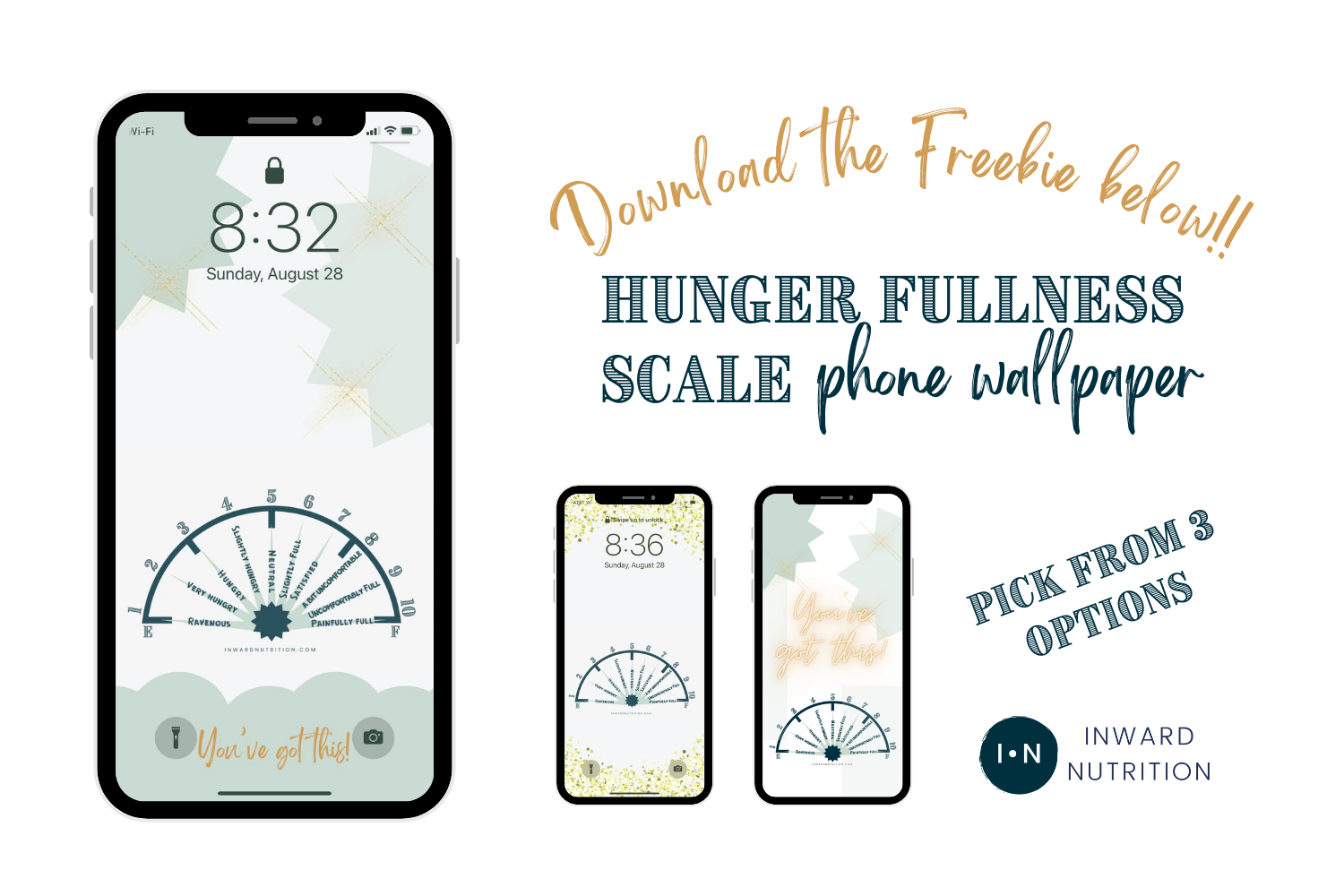Hunger Fullness Scale Freebie
You can scroll straight to the bottom of the post for the freebie, but I recommend reading below to learn how to use it!
Notice Which Cues You Follow
The intuitive eating journey is all about following internal cues instead of external ones. If you’ve been dieting most of your life or are in recovery from an eating disorder, listening and responding to hunger and fullness cues can require lots of practice!
Signs You Need The Hunger/Fullness Scale
You don’t let yourself eat lunch or dinner early, even if you’re hungry.
You don’t notice hunger until the point of being ravenous.
You drink water or coffee instead of eating when you’re hungry.
You eat with lots of distractions.
The only reason you stop eating is that you’ve finished your portion.
You finish everything on your plate, every time.
You stop eating when you’re no longer hungry, instead of sometimes experiencing fullness.
You don’t notice your fullness until it’s physically uncomfortable.
The Hunger/Fullness Scale Details
1 - Ravenous: You’re unable to focus, feeling irritable, and light-headed.
2 - Very Hungry: You can’t stop thinking of food and feel an urgency to eat.
3 - Hungry: It’s time to eat, some urgency to eat.
4 - Slightly Hungry: “I could eat.” Slight interest in food.
5 - Neutral: Neither hungry nor full; lack of interest in food
6 - Slightly Full: You can sense there’s food in your stomach.
7 - Satisfied: You’re full, but not uncomfortable. Eating becomes less enjoyable after this point.
8 - A Bit Uncomfortable: There’s some distention in your stomach and no desire to keep eating.
9 - Uncomfortably Full: This is after a big meal, like Thanksgiving.
10 - Painfully Full: You’re feeling sick, like after a binge.
Notice the image contains both a thought bubble AND a stomach. This is a reminder of the physical AND mental signs of hunger. If you only rely on bodily sensations, like stomach gurgling, you’re waiting too long before you eat! You can also rely on your brain’s interest in food as a valid cue for hunger.
Practice!
I’ve created a hunger/fullness scale that you can have at the tips of your fingers! You can upload this photo as phone wallpaper and use it throughout the day to check in with yourself.
Start to notice the subtle cues your body gives you. How does it feel to eat before you reach the point of extreme hunger?
Pay attention to how long you remain full after different types of meals and snacks. Did you get hungry again after eating an apple for a snack? Try pairing it with peanut butter next time and see how long that lasts.
I’ll send you an email with the phone wallpaper soon, so check your inbox! By signing up, you’ll also receive about 2 emails from me per month - letting you know about new blog posts and offerings.

